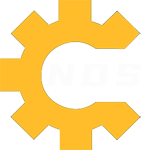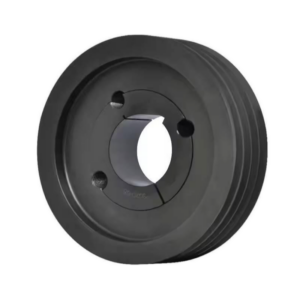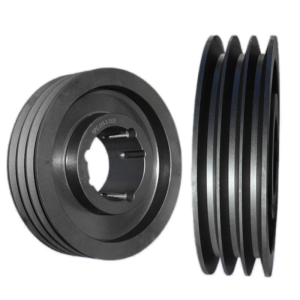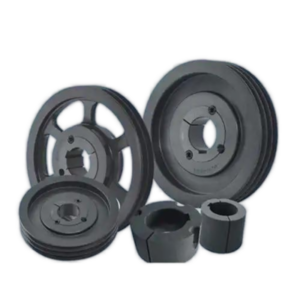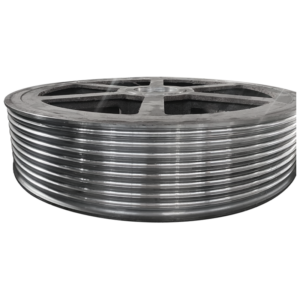Introduction
In power transmission systems, the correct identification of sprockets is crucial for ensuring efficient and reliable operation. A sprocket’s name and specifications are intrinsically linked to the chain it is designed to drive. This article provides a clear guide to sprocket naming conventions and details the key differences between the world’s two primary standards: the Metric (ISO) system and the Imperial (ANSI) system.
1. The Basics of Sprocket Naming
A sprocket is not named in isolation; its identity is derived from the chain it matches. A complete sprocket specification typically includes the following elements:
- Chain Number: This is the most fundamental part. Examples include
08B,16A,RS60, orANSI 40. The sprocket is first defined by the chain model it accommodates. - Number of Teeth (Z): Denoted by ‘Z’. For example,
Z=25indicates a 25-tooth sprocket. - Type/Series (Construction Style): This indicates the sprocket’s physical design for mounting.
- Type A (or PL): A flat plate with a single hub extension (boss) on one side. This is the simplest form.
- Type B (or PLa): Has hub extensions on both sides. This reinforced structure is stronger and used for heavier loads.
- Type C: A finished bore sprocket that typically requires a separate bushing for attachment to a shaft.
- Bore Size: The diameter of the central hole for mounting onto a shaft. This is often specified with a tolerance, such as
H7. - Hub Diameter and Width: The dimensions of the central protruding section.
- Plate Thickness (Chain Width): For double-strand or multi-strand sprockets, the overall thickness or individual plate thickness is specified.
Naming Example:
- Full Description:
08B Sprocket, Z=25, Type B, 20H7 Bore - Common Reference: In daily communication, it is often simplified to “an 08B-25 tooth sprocket,” with other details specified in drawings or selection tables.
2. Metric (ISO/GB) vs. Imperial (ANSI): A Detailed Comparison
The global chain market is dominated by two standards: the Metric ISO 606 standard (common in Europe, Asia, and increasingly worldwide) and the Imperial ANSI B29.1 standard (common in North America). China’s GB standard is essentially identical to the ISO standard.
The table below provides a clear comparison:
| Feature | Metric Sprockets (ISO 606 / GB) | Imperial Sprockets (ANSI) |
|---|---|---|
| Governing Standard | ISO 606 (Global, except North America) GB/T 1243 (China) | ANSI B29.1 (North America) |
| Unit of Measure | Millimetres (mm) | Inches (inch) |
| Model Naming | Number + Letter e.g., 08B, 16A, RS100 | Number Only e.g., 35, 40, 50, 60 |
| Model Meaning | Number: Relates to pitch (P). Calculate as: Number × (25.4/16) – 08B: 08 × (25.4/16) ≈ 12.7mm– 16A: 16 × (25.4/16) = 25.4mmLetter: Denotes series ( A or B). | Number: A code, not a direct dimension. Must be cross-referenced with a table. – 40: Pitch = 1/2″ (12.7mm)– 50: Pitch = 5/8″ (15.875mm)– 60: Pitch = 3/4″ (19.05mm) |
| Key Dimensions | Pitch (P), Roller Diameter (d1), Inner Width (b1) are even millimetre values. | Dimensions are based on inch fractions, resulting in decimal mm values. |
| Main Series | A-Series (General Metric): Dimensions mirror traditional inch sizes. B-Series (European Metric): Dimensions are true, even millimetre values. More common in Europe and China. (Note: 08A and 08B have the same pitch but different roller diameters and inner widths.) | Single Series: Each chain number (e.g., ANSI 40) has one unique set of dimensions. |
| Interchangeability | A-Series is partially interchangeable with ANSI: – An 08A sprocket will work with an ANSI #40 chain. – A 16A sprocket will work with an ANSI #100 chain. B-Series is NOT interchangeable with ANSI. An 08B sprocket is incompatible with ANSI #40 chain due to different roller diameters. | Corresponds with the A-series interchangeability noted above. |
| Tooth Profile | Designed according to ISO or related national standards (e.g., DIN, JIS). | Designed according to ANSI standards. |
3. How to Identify and Select the Correct Sprocket
- Identify by Model Number:
- If the model is a “Number + Letter A/B” (e.g., 06B, 12A), it is Metric (ISO).
- If the model is a pure number (e.g., 35, 40, 50), it is Imperial (ANSI).
- The Golden Rule: Chains and Sprockets Must Match!
- NEVER mix a Metric B-series sprocket with an Imperial ANSI chain, even if their pitches appear identical (e.g., 08B and #40). This will cause rapid, severe wear and premature failure.
- When in doubt, measure the physical chain:
- Measure Pitch (P): Measure the distance between the centers of three pins, then divide by two for accuracy.
- Measure Roller Diameter (d1): Measure the outside diameter of a chain roller.
- Compare these measurements to a standard dimension table to accurately identify the standard and model.
- Selection Advice:
- For new designs in China and Europe, prefer the ISO Metric B-Series for its true metric dimensions and compatibility with modern metric machinery.
- In North America or when maintaining imported equipment, the ANSI Imperial series is required.
- When replacing a sprocket on existing equipment, always confirm the specification of the original chain first.
Conclusion
Understanding the distinction between Metric and Imperial sprocket standards is essential for anyone involved in mechanical design, maintenance, or procurement. By following the naming conventions and remembering that compatibility is determined by the chain, you can ensure the correct selection for a durable and efficient drive system. Always refer to official standard tables for critical dimensions when precision is required.
